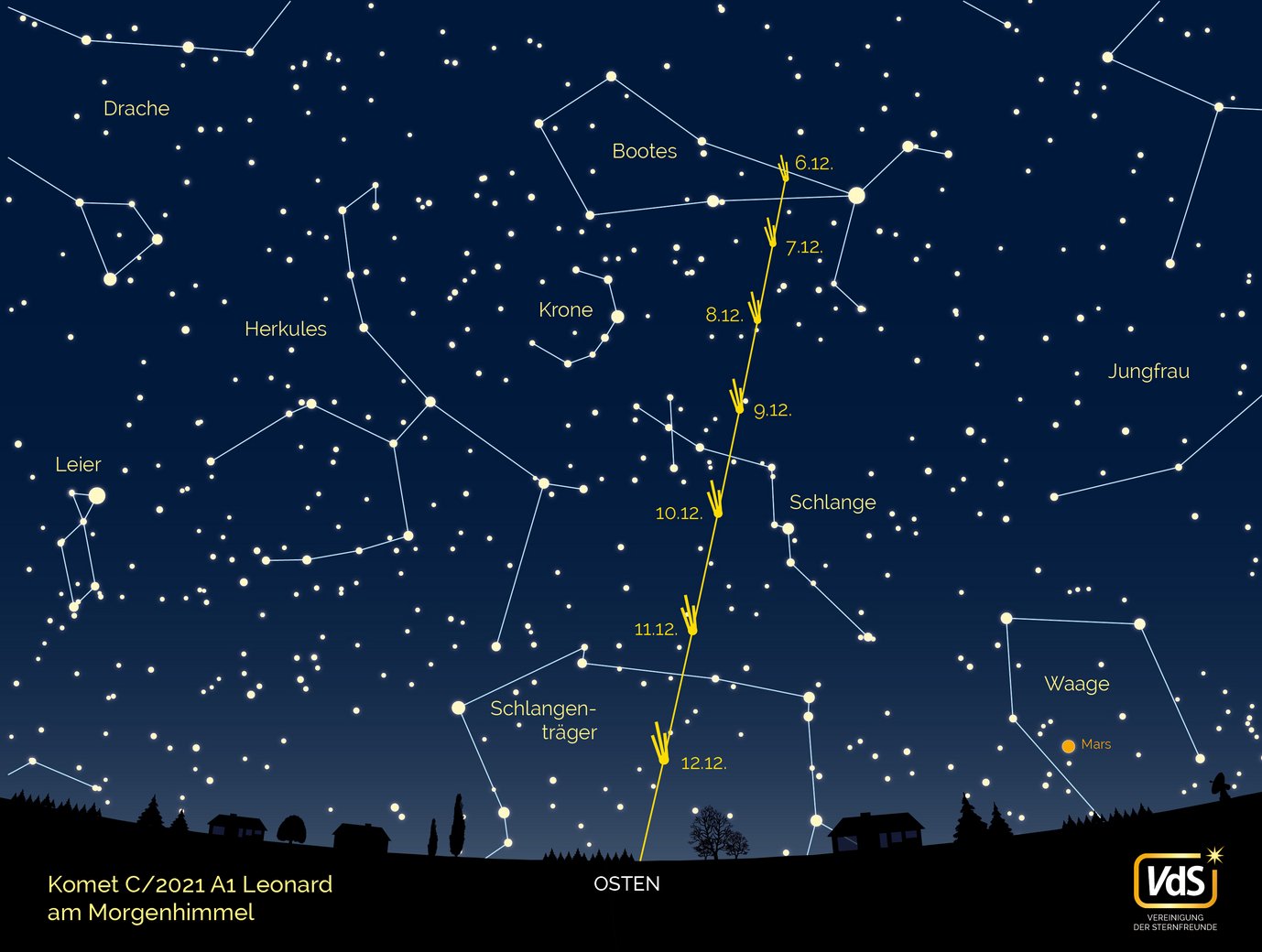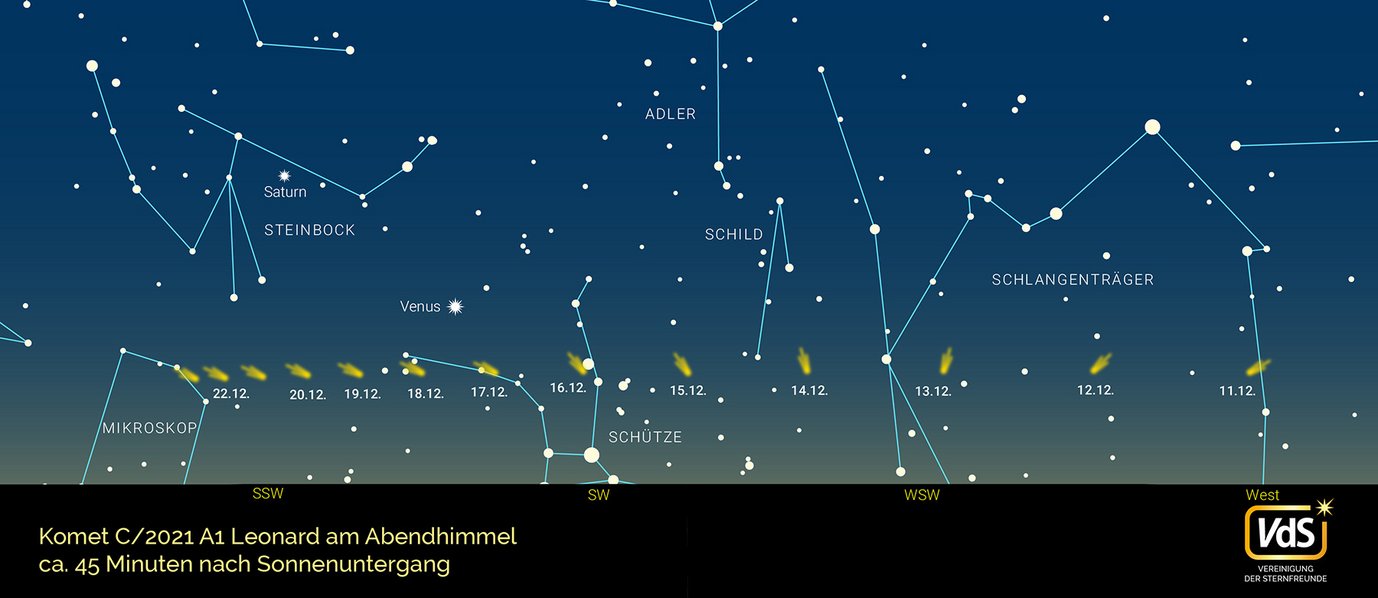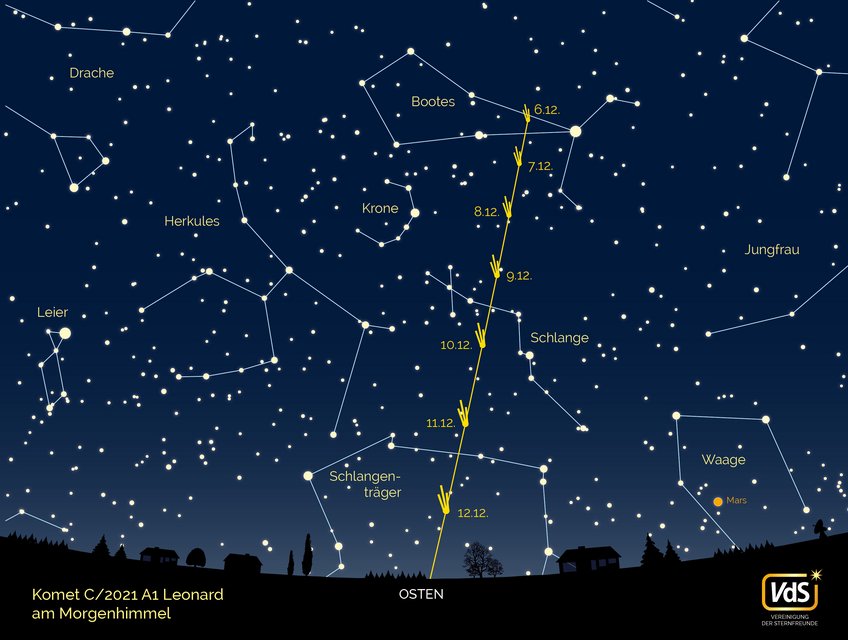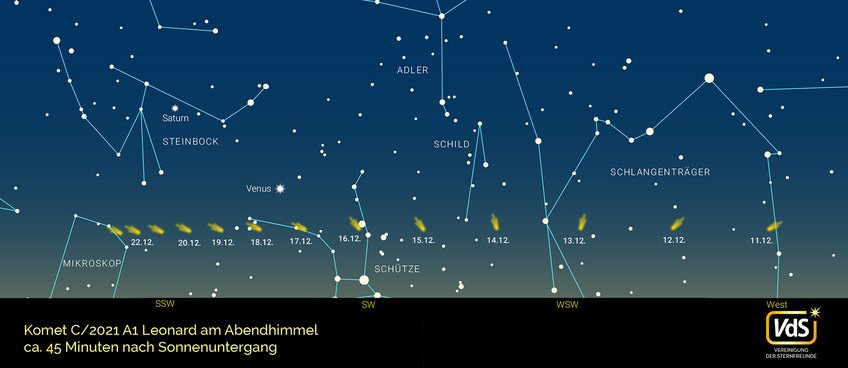Comet Leonard: A celestial extravaganza for binoculars
Stargazers have been looking forward to this all year: In the next few days, comet C/2021 A1 Leonard will be visible in the morning sky. To observe it, look at the right position above the eastern horizon, if possible with binoculars or a small telescope. The best time to see the comet is between 6 and 7 am.
It was the first comet discovery of the year: Already on 3 January 2021, Gregory J. Leonard was able to detect a faint, slow-moving object at the Mount Lemmon Observatory in the US. Some time later, however, it became clear that this comet is still a long way from the Sun and will not reach its greatest brightness until the end of the year. After that it will continue to approach the Sun and subsequently disappear again into the outer space.
Amateur astronomers are watching "Leonard" closely because it promised to be a highlight in the first half of December. So far they have not been disappointed, as the comet is developing as planned and has already been photographed with its tail and seen with binoculars.
However, this comet will not provide a bright spectacle. By 12 December, its brightness will increase to the point where it will be barely visible to the naked eye as a faint dot under dark skies. With binoculars or a telescope, however, Leonard is an easy target and a worthwhile object especially for astrophotographers.

The comet rises above the eastern horizon in the morning sky, but gets closer to the Sun day by day as its brightness increases. Until 12 December, it will be a struggle with both the weather and dawn - each day Leonard increases a little in brightness, but quickly approaches the horizon and soon disappears in the bright morning sky at dawn. On 12 December, it also has its closest approach to Earth - but at about 34 million kilometres (about 100 lunar distances), it remains at a respectable distance.

Afterwards, the comet moves quickly towards the southern sky. Observers from central Europe can search the southwestern horizon during the bright evening twilight for it though. Leonard will reach its closest approach to the Sun exactly one year after its discovery: on 3 January 2022.
This visit by comet Leonard is not a conspicuous celestial event, but it will be the only one for us. After passing the Sun, the icy pile of debris moves on into space and is predicted never to return to our solar system.

